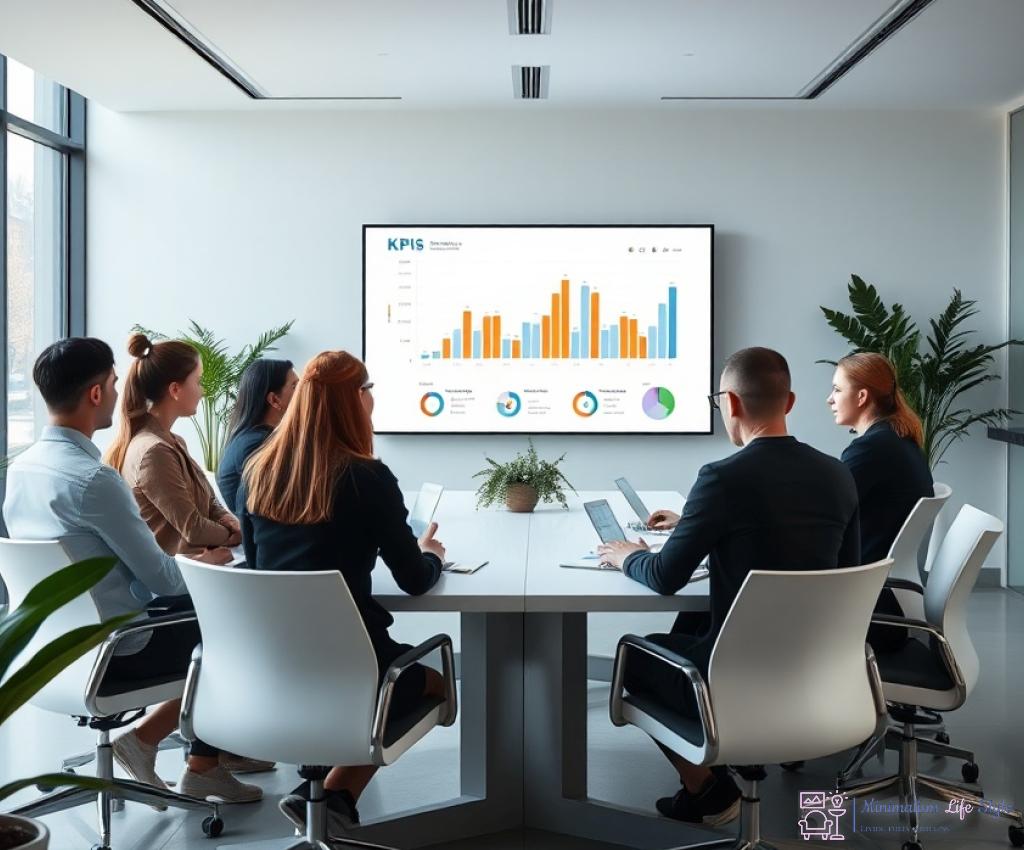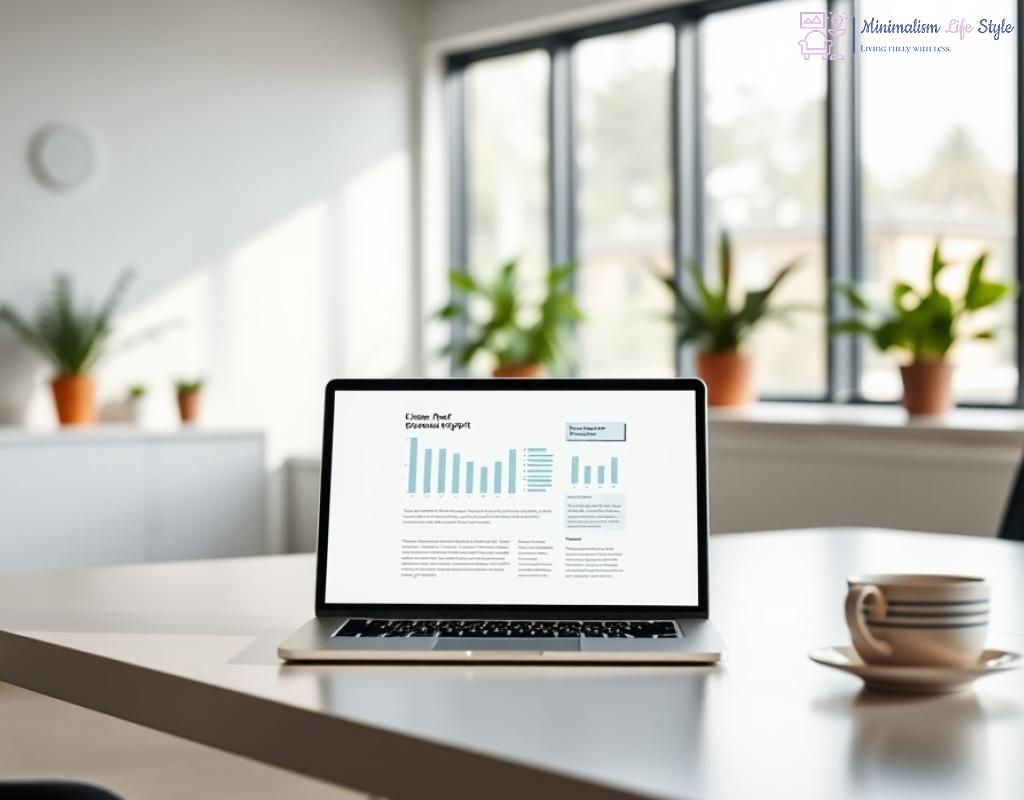Crafting Clear KPIs: The Heart of Minimal Reporting

Understanding the Essence of KPIs
Key Performance Indicators (KPIs) are more than just numbers; they are the pulse of your business’s performance. In a world where information overload is the norm, crafting clear KPIs becomes vital to ensuring that stakeholders grasp the essential metrics that drive success. By narrowing down your focus to what truly matters, you can present updates that are not only concise but also powerful in their impact.
Defining Effective KPIs
When defining effective KPIs, it is crucial to consider the specific goals of your business. This ensures that every metric you track aligns with your strategic objectives, providing a clear path to success. Here’s what to consider when defining KPIs:
- Relevance: Ensure each KPI is directly related to your business goals.
- Measurability: Choose metrics that can be quantified easily.
- Actionability: KPIs should guide decision-making and not just report results.
- Timeliness: Regularly review and adjust your KPIs to remain relevant.
Visualizing Your KPIs for Maximum Impact
Once you have defined your KPIs, the next step is to visualize them in a way that is easily digestible. Effective data visualization can transform complex data into simple, actionable insights. Consider using tables or charts to present your KPIs clearly. Below is an example of how to present KPIs in a table format:
| KPI | Target | Current Status | Trend |
|---|---|---|---|
| Sales Growth | 15% | 12% | ⬇️ |
| Customer Satisfaction | 90% | 85% | ⬆️ |
| Net Profit Margin | 20% | 22% | ⬆️ |
This table not only presents the KPIs clearly but also allows stakeholders to quickly assess the performance against targets and notice trends at a glance. By focusing on clarity and impact, you empower your team to make informed decisions swiftly.
Visual Storytelling: Charts That Speak Volumes
In the realm of minimal business reporting, where clarity reigns supreme, the ability to convey complex data through visual means is invaluable. Charts serve as your storytelling allies, translating abstract numbers into relatable narratives that resonate with stakeholders. When crafted thoughtfully, these visuals can captivate your audience and instill a deeper understanding of your business’s performance.
Choosing the Right Chart for Your Data
Not all data is created equal, and neither are the charts that represent it. Selecting the appropriate type of chart can significantly enhance the effectiveness of your message. Here are some common types of charts and their ideal use cases:
- Bar Charts: Best for comparing quantities across different categories.
- Line Graphs: Ideal for showing trends over time, making them perfect for tracking KPIs like sales growth.
- Pie Charts: Useful for displaying proportions, helping stakeholders quickly grasp the composition of a whole.
- Area Charts: Great for illustrating cumulative totals over time, providing insights into the volume of data.
Crafting a Compelling Narrative with Data
Data visualization is not just about aesthetics; it’s about storytelling. Each chart should tell a story that aligns with your business objectives and resonates with your audience. To create a compelling narrative:
- Identify the Key Message: What do you want your audience to take away from the data?
- Provide Context: Use annotations or labels to explain significant changes or trends.
- Highlight Insights: Emphasize critical data points that warrant attention, guiding the viewer’s focus.
By weaving these elements together, your charts can transform raw data into powerful visual narratives that engage and inform.
The Power of Summary: Distilling Information Effectively
In an age where data inundates our daily operations, the ability to distill information into succinct summaries is a powerful skill that can transform the way businesses communicate. A well-crafted summary doesn’t just convey information; it distills the essence of complex data into bite-sized insights that drive action. This art of summarization becomes particularly critical in minimal business reporting, where clarity and brevity reign supreme.
Mastering the Art of Summary requires a keen understanding of what truly matters to your audience. It starts with identifying the core message you want to deliver. By stripping away the noise and focusing on the key insights, you create a narrative that resonates. For instance, instead of presenting every detail from a lengthy report, highlight the most significant findings and their implications for the business. This not only saves time but also ensures that stakeholders can grasp the essential points at a glance.
Furthermore, the structure of your summary plays a vital role in how effectively it communicates. A logical flow, starting with the most impactful data followed by supporting details, can guide the reader seamlessly through your insights. Emphasizing trends or pivotal changes using bold or italic type can further draw attention to critical points. This strategic emphasis can serve as a roadmap, helping your audience navigate through the information without getting lost.
Engaging Your Audience is another crucial aspect of effective summarization. The language you choose should not only be clear but also engaging. Use active voice and persuasive phrasing to captivate your readers. Incorporating relevant anecdotes or illustrative examples can further enliven your summary, making it relatable and memorable. Remember, the goal is not just to inform but to inspire action and foster engagement among your stakeholders.
In conclusion, the power of summary in minimal business reporting cannot be underestimated. By distilling information effectively, you not only enhance understanding but also empower your audience to make informed decisions swiftly. In this fast-paced world, where time is of the essence, mastering the art of summarization is not just an advantage; it’s an imperative.
Frequency and Timing: When to Share Your Updates
In the dynamic landscape of business, understanding when to share updates can be just as crucial as what you share. The frequency and timing of reports can significantly influence how stakeholders engage with the information presented. In a world where attention spans are dwindling, aligning your reporting cadence with the needs of your audience can transform standard updates into powerful communication tools.
Determining the right frequency for your updates requires a careful assessment of several factors. Consider the rhythm of your business cycles—are there specific times when stakeholders are more receptive to information? For example, aligning reports with the end of a quarter or after major project milestones can enhance relevance. Additionally, understanding your audience’s preferences is vital. Some stakeholders may appreciate weekly snapshots, while others may prefer monthly deep dives. By tailoring your approach, you not only respect their time but also foster a culture of engagement.
Timeliness is another critical aspect that intertwines with the frequency of reporting. Providing updates at the right moment can be the difference between informed decision-making and missed opportunities. When information is delivered promptly, it enables stakeholders to respond swiftly to changes in the business environment. To illustrate, consider the implications of delivering sales performance metrics right after a marketing campaign versus waiting until the end of a fiscal quarter. The former allows for immediate adjustments and strategic pivots, while the latter may lead to lost chances for optimization.
Moreover, maintaining a consistent schedule for updates cultivates an environment of predictability and trust. Stakeholders come to rely on the rhythm of your reporting, knowing when to expect critical insights. This reliability fosters a sense of accountability within your team, as everyone understands the importance of preparing information that is concise and impactful. Ultimately, the synergy of frequency and timing in your reporting strategy can create a narrative that resonates deeply with your audience, enhancing their understanding and engagement.
Feedback Loops: Enhancing Reports Through Audience Engagement
In the realm of minimal business reporting, the journey doesn’t end with crafting concise updates. Rather, it evolves through feedback loops that foster a dynamic dialogue between your reports and your audience. Engaging stakeholders not only enhances the relevance of your reports but also cultivates a culture where insights are continuously refined and improved. When stakeholders feel their voices are valued, they are more likely to engage meaningfully with the information presented, transforming passive consumption into active participation.
Establishing a robust feedback mechanism is essential for understanding how your reports resonate with stakeholders. This involves creating pathways for your audience to share their thoughts and perspectives on the updates provided. Whether through surveys, direct conversations, or informal feedback sessions, inviting input empowers your audience to express their needs and preferences. Moreover, this engagement can lead to a wealth of insights that inform the evolution of your reporting strategy, helping you to fine-tune the metrics and narratives that matter most.
Transforming Insights into Actionable Changes
Once feedback has been gathered, the next step is to transform these insights into actionable changes in your reporting process. This could mean adjusting the frequency of updates, altering the format of the reports, or even refining the KPIs being tracked. For instance, if stakeholders express a desire for more visual data representations, incorporating infographics or interactive charts may enhance the clarity and engagement of your reports. Conversely, if certain metrics are deemed less relevant, consider replacing them with those that align more closely with your audience’s interests and objectives.
Creating a Cycle of Continuous Improvement
Establishing feedback loops creates a cycle of continuous improvement that positions your reporting as a living, breathing entity, rather than a static once-a-month update. This ongoing engagement not only keeps your reports fresh and aligned with audience expectations, but it also fosters a sense of ownership among stakeholders. When they see their feedback reflected in subsequent reports, it enhances their investment in the data presented, leading to greater buy-in and collaboration across teams. Ultimately, this enriched engagement transforms your reporting from a mere obligation into a vital component of strategic decision-making.




